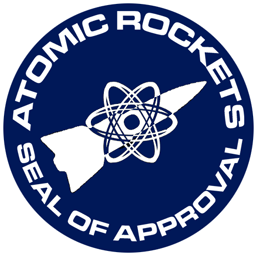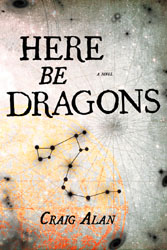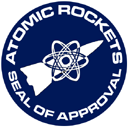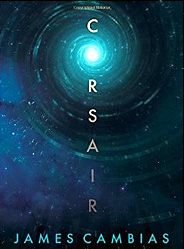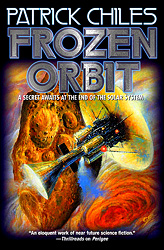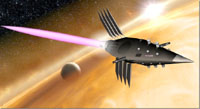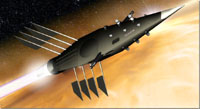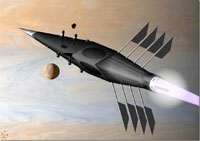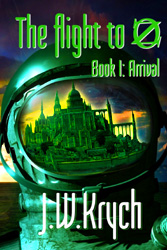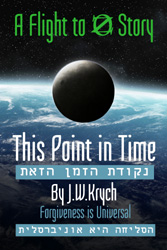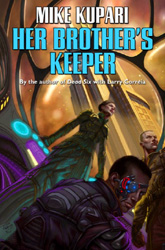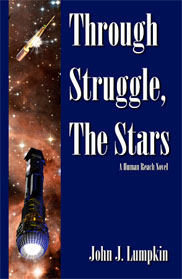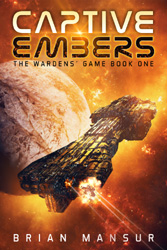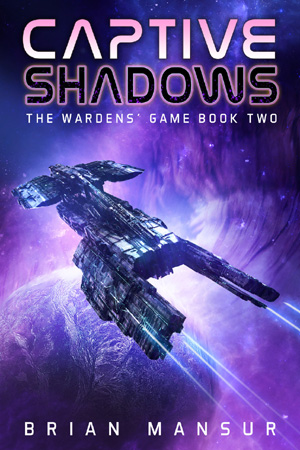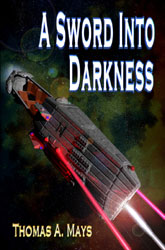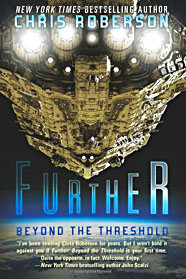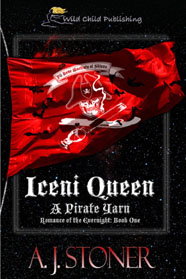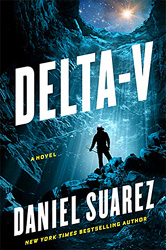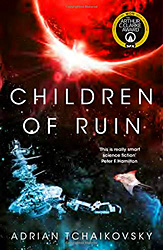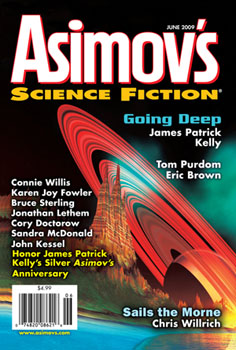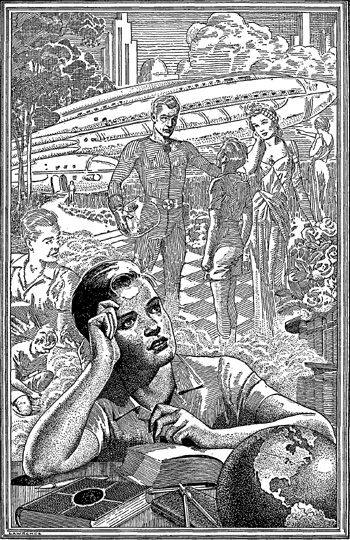
"King of the Gray Spaces" aka "R is for Rocket" by Ray Bradbury
Artwork by Lawrence Sterne Stevens
Introduction

Streetwise
Depicts the moment when the young Jack Kirby discovered science fiction and the world of comic books changed forever.
Artwork by Steve Rude
Click for larger image
I have a confession to make. My motives in creating this website were not totally altruistic. Surprise, surprise.
I suppose that as an SF novel reader, I was spoiled in my youth by reading Heinlein, and later Pournelle and Niven. For whatever reason, I have been quite disappointed in the SF novels that have come out in the last couple of decades. In particular, the scientific accuracy was abysmal.
So this website is part of my master plan, to give a resource to SF authors that will assist them in getting the science correct. The end result is that I will have more more SF novels to read that are to my liking.
Much to my surprise, my plan is actually working.
A couple of SF authors have contacted me and noted that this website was most helpful in providing technical information. I have read the manuscripts, and I can definitively state that I have gotten more enjoyment out of reading these than any other novels I have read in the last twenty years. With any luck, more novels will follow.
The best part is when I see a nice detail in the novel and I know exactly which part of this website supplied the information.
Please note this page is for novelists who have directly acknowledged that this website has been helpful. Other novels that have the Atomic Rocket seal of approval that the author created with no help from me can be found here.
Craig Alan
Here Be Dragons is Craig Alan's first novel, but you'd think it was his 100th. Polished, gripping, engrossing, it is all that. But the scientific accuracy measures up to my vanadium steel yardstick. As well it should, the acknowledgements thanks this website by name (along with rec.arts.sf.science and SFConSim-l). He mentioned to me that he spent a lot of time with Atomic Rockets site open in one browser window while writing. As I mentioned above, that was this website's primary purpose.
Several decades before the novel opens, some one or some thing suddenly appears and claims the outer solar system. The nations of Earth cannot find out anything about these "outsiders", except that any spacecraft that ventures past the asteroid belt is hunted down and converted into metallic swiss cheese by kinetic energy weapons. Finally Captain Elena Gonzales and the crew of the Gabriel are given orders to penetrate the line in the sand in a desperate bid to discover the nature of the invaders.
Craig Alan has a believable warships design, plausible weapons, details about shipboard life, military protocol, a future history, the complete package. And the ship has heat radiators!
And at the end of the novel is a nail-biting spaceship to spaceship duel that will have you on the edge of your seat. That battle is just begging to be made into a game scenario.
Trigger Warning: One Amazon reviewer sees anti-Semitic elements to the pilot's denouement, although the others do not. For what it is worth I did not see any such thing when I read the novel.
James Cambias
Corsair is the new novel by noted author and game designer James Cambias (review). It is available in hardcover, ebook, or audio book format.
Amazingly enough, Mr. Cambias has managed a way to make the vintage old SciFi troupe of Space Pirate actually work in the real world. All it requires is:
[a] a reliance upon unmanned semi-autonomous cargo spacecraft
[b] computer hackers
[c] the Terra-Luna Lagrange One point as pirate infested waters, right on the direct low-energy path where all the valuable cargo will pass by
Now why didn't I think of that?
You may have noticed I've used quite a few quotes from him in various parts of this website. It is really hard to find a person more qualified to write a novel with a "Atomic Rocket" levels of science-hardness than a person who is one of the experts used as a source for the Atomic Rocket website.
Full disclosure: I did receive an unsolicited autographed copy of the hardback from Mr. Cambias along with some praise that made me blush. But the fact that I have been quoting him on this website for the better part of a decade demonstrates that my high opinion of his work predates this novel.
Patrick Chiles
![]() Mr. Chiles tells me he used this website extensively when writing his new book FROZEN ORBIT. And it shows. If you enjoyed the hard science in The Martian, you'll love this book! With the added spice of a technothriller and a dash of cold war political intrigue, you'll find it irresistible!
Mr. Chiles tells me he used this website extensively when writing his new book FROZEN ORBIT. And it shows. If you enjoyed the hard science in The Martian, you'll love this book! With the added spice of a technothriller and a dash of cold war political intrigue, you'll find it irresistible!
But he won my heart by incorporating a spacecraft using an Orion drive. The fact it was in a covert Soviet mission to Pluto covertly launched back when the Soviet union still existed (1991), well that got me hooked. His spacecraft have heat radiators which is a big plus in my book. The NASA mission carrying the protagonists is based on the NASA Human Outer Planet Exploration (HOPE) study. The jargon of NASA mission control and the astronauts is pitch perfect. As is the bureaucratic infighting.
Mr. Chiles has the background. He is a graduate of The Citadel and a Marine Corps veteran, a licensed pilot, and an aviation safety manager. In addition to his novels, he has written for magazines such as Smithsonian's Air & Space.
His new novel Frontier is due out June 1, 2021; and I can't wait!
Mark Kalina
![]() Hegemony is an exciting starship combat novel by Mark Kalina. He tells me that he made use of information and ideas from this website, but I could see that by just reading a few pages. Most of the science is gratifyingly hard, and the other parts (such as the obligatory FTL propulsion) have sensible limitations established. He even postulates a plausible solution to the mass-duplication problem inherent in "uploading" a person's mind into cyberspace. A most enjoyable read. It is currently only $0.99 which is a steal for such a good book.
Hegemony is an exciting starship combat novel by Mark Kalina. He tells me that he made use of information and ideas from this website, but I could see that by just reading a few pages. Most of the science is gratifyingly hard, and the other parts (such as the obligatory FTL propulsion) have sensible limitations established. He even postulates a plausible solution to the mass-duplication problem inherent in "uploading" a person's mind into cyberspace. A most enjoyable read. It is currently only $0.99 which is a steal for such a good book.
Artist Francis Drake collaborated with Mark Kalina to create some artwork based on the novel. They show the lance ship Fire Blossom over Formalhauts protoplanetary disc, and a lance ship launching interceptors, powering them with its primary laser arrays.
James Krych
![]() The Flight to Oz does not sound like a hard science novel, but make no mistake. It is.
The Flight to Oz does not sound like a hard science novel, but make no mistake. It is.
In the Wonderful Land of Oz, Glinda the Good Witch is warned by Lurline the Fairy Queen that Oz will be forever changed by a visitor from the stars! Then the spacecraft S.R.E.S.S. Haley emerges from an Einstein-Rosen bridge, with Lt David Benjamin commanding.
Lt Benjamin et al have to fight in the battle to save Oz from evil thoughts materialized into demons (the dreaded Evilons). But the descriptions of the spacecraft and other technological details are definitely relevant to our interests. Yes, the story has allegorical elements, but so does lots of science fiction. There are amusing scenes as the people of Oz are given a crash course in computer and other technology.
The fantasy elements are bouncy, bright, and mythic. But the science is as hard as osmium-iridium alloy. Mr. Krych has combined an encyclopedic knowledge of all the Wizard of Oz books with scientifically precise details of spacecraft, astronautics, lunar base construction, and astronaut training. All leavened with experience from his 23 year career in the U.S. military, finishing his last two years of service on active duty orders as the Brigade S-6 IT Signal Warrant Officer for the CCMRF, the CBRNE (Chemical, Biological, Radiological, Nuclear and Explosives) Consequence Management Response Force. His spacecraft research was assisted by reading this website, and I may have helped him out with a question or three.
The second book in the series, Anusha of Oz, has the people of Oz trying to repair the damage from the aftermath of the Evilon war. Fractures appear in the Oz-Spaceman alliance. Naturally Jonathan wants to solve problems by using high technology, while Ozma of Oz naturally wants to use good ol' magic. Things turn even more Luddite when H.M. Wogglebug the professor of Wogglebug College of Oz decides that all this "technology" nonsense is actually evil black magic. Then Jonathan manages to repair the Haley's auxiliary craft Bravo. Jonathan and Ozma of Oz find themselves on an unexpected space flight.
The third book in the series, This Point in Time, starts with a brief history of the Lunar far side radio observatory, with lots of fascinating details about the construction of a lunar base. Then things get exciting when Jonathan and Ozma in the Bravo pop out of another wormhole right over the lunar observatory.
Mr. Krych can be contacted on DeviantArt and Facebook
Mike Kupari
Mr. Kupari is an Air Force explosive ordnance disposal technician noted for being the co-author of military-political thrillers like Dead Six and Swords of Exodus.
But now he is branching out into science fiction with his new novel Her Brother's Keeper. Which was partially due to an interest in science fiction kindled by this website.
And Mr. Kupari is no stranger to Atomic Rockets. In fact, the Sidearms: Slugthrowers contains quite a few quotes from him, writing under the pseudonym "Nightcrawler".
He has a free short story online called "Ember of the Past", which also was helped by Atomic Rockets. How do I know? Well, it seems that in the story the protagonist's spacecraft is a Polaris Class from Winchell-Chung Astronautical Industries.
Matthew Lineberger
Mr. Lineberger was born, as far as I can tell, in 1980. His blog has not been updated in quite some time. He can generally be found on the StarDestroyer forum, where he goes by the handle RedImperator. He can be contacted there by private messages.
Mr. Lineberger's novel is The Humanist Inheritance (now renamed The Last Great War). For a short while it was available online, but has been removed for copyright reasons. He said that the story started originally when he read the Atomic Rockets website and found himself intrigued with the idea of creating a "hard" (or at least, harder) sci-fi universe.
The novel's science is gratifyingly hard, there is plenty of action, and the characters are engaging. It also has an incredibly broad scope. The reader starts off thinking this will just be a novel about North American and Chinese military spacecraft shooting each other. Then the reader gets sucker-punched as the situation spirals out of control and they realize that Mr. Lineberger is just getting started.
And of course all of the space battle scenes would make intriguing scenarios for your favorite space combat simulation game that used vector movement.
Regrettably, Mr. Lineberger warns that "As for publication, no word yet on that, save that it's a very long process -- I expect to have another novel written between when I start looking for a publisher and when The Humanist Inheritance shows up in print. I haven't even begun the process of looking for an agent or publisher yet--actually writing and editing the book consumes enough energy as it is."
Jennifer Linsky
Jennifer Linsky is a nurse and US Navy veteran who has several featured quotes illuminating topics in this very website. She is on record that the Atomic Rocket website assisted her in getting the science correct in her debut science fiction story Flowers of Luna.
Well, I've read a pre-release copy of her story, and I can assure you she did her homework. I could not find a single scientific glitch in it. The story is about a young woman starting college at Lunograd, Luna. But the background has nice tid-bits such as her annoyance that since her mother is a passenger on the good ship Gray Maru currently passing Mars on its Hohmann transfer to the Jovian Trojans, the light-speed lag makes a conversation almost but not quite impossible.
Flowers of Luna has just been released on Amazon
John Lumpkin
Mr. Lumpkin's novel is Through Struggle, the Stars. It does include FTL travel, but done in a thoughtful and responsible way. The science is of top quality hardness, the geopolitical situation is deep and well thought out, the military intelligence details are terrifyingly real. The writing style is clear and flowing, it reminds me of early Heinlein, and of the Niven/Pournelle collaborations. Mr. Lumpkin cites as influences Heinlein, Pournelle, Niven, Forester, O'Brien, early Clancy, and Daniel Keys Moran.
And yes, the novel has plenty of space battle scenes just begging to be made into game scenarios.
You can find a list of outlets at his website. The site also includes background information on the novel and sample passages.
Mr. Lumpkin is a Senior Fellow and contributor to GlobalSecurity.org since June 2006. He runs the site's Terrorism Profiles Project. Previously, he was a reporter with The Associated Press in Washington, D.C., where he covered military affairs, homeland security and intelligence matters, breaking several key stories during the Sept. 11 investigation. His professional travels include Iraq, Afghanistan and China. Prior to joining AP, he covered military affairs for the Albuquerque Journal.
This is why the counter-terrorism details in his novel are dead accurate. The geopolitical aspects of his novel are uncommonly realistic as well, for the same reason.
I haven't asked him, but it appears to me that Mr. Lumpkin has also done his homework at the Atomic Rocket sister website: Three Dimensional Star Maps. The stars used are real, the positioning is accurate, and he has gone to the trouble of putting the interstellar colonies around stars with a high probability of hosting planets with life.
If you find this interesting, and are a publisher, agent or established author, he asks that you get in contact with him.
Late breaking news:
- Through Struggle, the Stars is now available in paperback format in addition to eBook format
- The Desert of Stars, the sequel to Through Struggle, the Stars, is now available in eBook format
- Paperback version of The Desert of Stars is expected shortly
Brian Mansur
![]() Brian Mansur has been reading the Atomic Rockets website since 2007 to help him write his first novel "Captive Embers". He has been taking pains to keep the science as accurate as possible. and he has succeeded
Brian Mansur has been reading the Atomic Rockets website since 2007 to help him write his first novel "Captive Embers". He has been taking pains to keep the science as accurate as possible. and he has succeeded
Captive Embers has been released, along with an an audiobook version. Get your copies now. The second novel, Captive Shadows, is already 30K+ words along.

War ravages exiled humankind, but who is the real enemy?
Mykonian fleet operative, Rafe Hastings, has spent several tours around Belia trying to keep weapons traffickers from tearing the local space habitats apart. He’s eager to go home when an informant passes him dire news about an infamous cartel boss named Lilith. Not only has she acquired nuclear weapons, but she has somehow gained permission from the mysterious robotic overlords of inhabited space—the Wardens—to use them.
The battleship Tsunami is dispatched to investigate Rafe’s discovery and veteran operations officer, Sean Merrick, soon finds himself caught in a conspiracy involving feuding Wardens. With allies dying all around him, his only hope for survival turns out to be a junior combat nurse named Sarah Riley who has scarcely fired a gun before.
As Rafe, Sean, and Sarah battle Lilith, they’ll be forced to rely on the unexpected to save the people they love. But with the Wardens constantly changing the rules, could it be that no matter who wins the war, everyone loses?
Grab this exciting, debut Military Sci-Fi novel from Brian Mansur, perfect for fans of Alastair Reynolds, Jack Campbell and Ken Lozito. You can also get it on Audible, narrated by the award-winning Scott Aiello.

Thomas A. Mays
![]() A Sword Into Darkness is Thomas Mays' debut novel, and it is a blockbuster! Kept me on the edge of my seat up til the end. And unlike so many other novels, when it promised a revelation of a dread secret at the end, it actually delivered. Puzzling occurrences make perfect logical sense as the reader learns more. And the ships have heat radiators!
A Sword Into Darkness is Thomas Mays' debut novel, and it is a blockbuster! Kept me on the edge of my seat up til the end. And unlike so many other novels, when it promised a revelation of a dread secret at the end, it actually delivered. Puzzling occurrences make perfect logical sense as the reader learns more. And the ships have heat radiators!
The action starts when astronomers notice something odd in-line with the star Delta Pavonis. Hilarity rapidly ensues.
The cherry on the top is a couple of spacecraft combat scenes crying out to be made into game scenarios.
In hindsight, one could have predicted that the background of the novel would be well thought out and solid enough to walk on. Yes, Mr. Mays does acknowledge he was helped somewhat by the Atomic Rockets website. But more importantly, he has not one, but two degrees in physics. And to top it off, he is an 18-years-and-counting veteran of the US Navy, working as an officer in the surface fleet aboard destroyers and amphibious ships, as well as assisting with research into ballistic missile defense.
There is only one piece of hand-waving magic-tech in the novel (the propulsion system), but its limitations and implications are carefully charted. Science fiction authors are allowed one bit of hand-waving in each novel, I think that's a rule I read somewhere. Otherwise the scientific accuracy is spot on. Well, there also is the mumbly-mumble field used by the mumbly-mumble, but that is actually not totally outside the laws of physics. You'll know it when you read it.
eBook available on Amazon Kindle. trade paperback available from CreateSpace.
Chris Roberson
Further: Beyond the Threshold is the first novel in a new thinking-person's space opera series by award-winning author Chris Roberson. Yes, it is set in a post-Singularity universe, but Mr. Roberson has thought out the ramifications of the various techno-magic items he introduces. But it has some good old fashioned hard science as well. I thoroughly enjoyed reading it.
And I suspect he was helped in part by this website, which is OK by me. What clues do I have? Oh, subtle easy-to-miss ones like these:

From the ages of twenty-one to twenty-four, just a bit over three years, I served aboard Orbital Patrol Cutter 972, first as an ensign, then a lieutenant. An Aurora ZD-36 manufactured by Winchell-Chung Industries, Cutter 972 was thirty meters, tip to tail, a small Keeper-class vessel intended for nothing more glamorous than the maintenance of navigational buoys in cislunar space. My "quarters," which stretched the definition of the word, were a cube approximately 2.5 meters to a side. A bit over 15.5 cubic meters, that small space was home for thirty-eight months.
The crowd jostled around to greet me, but I only had eyes for the rocket. I've loved a few women in my time, but never more than I loved that ship.
A Pole Star XT-14, manufactured by Winchell-Chung Industries, Orbital Patrol Cutter 1519 had been one of the fastest of 22C spacecraft. With its inertial confinement fusion drive capable of maintaining accelerations of one standard gravity for weeks at a time, it could make the transit from Earth to Titan in just over twelve days in a straight-shot brachistochrone trajectory, full burn to the midpoint, and then flipping over and decelerating the rest of the way.
Forty-five meters from tip to tail, it had an interior volume of just over five hundred cubic meters, massing out fully loaded at only a few hundred metric tons.

I'm sure somewhere Mr. Roberson is smiling genially, with an impish twinkle in his eyes. I rather suspect he inserted these delicious clues to see if I was paying attention. "Winchell Chung" is of course my name, that's subtle enough. The "Pole Star" is of course Polaris, the name of the spacecraft in my worked example. Which you will be utterly unsurprised to find out is forty-three meters tall from tip to tail, has an interior volume of five hundred and four cubic meters, and masses out fully loaded at three hundred seventy eight metric tons.
To Mr. Roberson goes the tip of the hat, and an Atomic Rocket Seal of Approval.
I'd like to say that I discovered this myself, but in truth the novel was pointed out to me by Marc Thomas.
Allen Steele
Mr. Steele does not belong on this web page, since he is a world-class two-time Hugo Award winner who was getting the science right in his novels long before this website even existed. His "Coyote" and "Rude Astronaut" series are delicious hard-science SF.
However, back in 2009 he approached me out of nowhere, since he was attempting to calculate the distance between 47 Ursae Majoris (Coyote) and a certain other star. A cursory Google search suggested that I was a likely resource person. Since I love his books I was honored to do the calculations for him, and give step-by-step instructions for future reference. He needed the distance information for his novel Hex, which was published June 7th, 2011. I won't reveal anything that was not already revealed in the cover blub, I'll only mention that it features a fascinating and innovative variant of a Dyson sphere.
So I'm using my peripheral involvement to justify including him on this web page.
Mr. Steel's novel Hex includes illustrations by Rob Caswell.
A. J. Stoner
Mr. Stoner's Iceni Queen is a rollicking tale of space pirates. But it does have a surprising amount of scientific accuracy. Mr. Stoner tells me that this website was a big help to get the science straight. I did thoroughly enjoy the novel.
Sample chapters of the novel can be found here.
The novel can be purchased in eBook format here.

"A society, like a forest, requires from time to time the purging catharsis of fire to endure. We are the burning, lashing tongues of that flame." - Julian The Bastard
Julian McAllister, son of an escaped slave, is a favorite son of the Riftward Marches; a loose confederation of colonies founded by pirates, smugglers and mercenaries pushed back over the centuries by the expanding Free Trade Federation. In contact with a dissident naval architect, he conceives the greatest theft in history: to steal the Navy's newest and most advanced warship, refitting her as a corsair. Leading his wing, The Lords of Entropy, into the remote Fringeward Expanse to terrorize Federation shipping, Captain McAllister sails into legend; failing to pause and consider the fate of "Legends."
Murder, rape, theft, vandalism, arson, impalement, immolation, mutilation, decapitation, rioting, genocide, mass extinction, dehumanization, degradation, decadence, duplicity, betrayal, revenge, exile, ignorance, intolerance, savage indifference, all seven deadly sins, blasphemy (lots of that) singing, dancing, gratuitous foul language, lesbian fighter pilots and genetically engineered ninja assassins: Iceni Queen has it all!

Daniel Suarez
![]() Daniel Suarez is a New York Times bestseller novelist, noted for his technothriller novels. His lastest book Delta-V features asteroid mining, and he really did his homework. The list of rocketry scientists and NASA researchers listed in the acknowledgements is quite impressive.
Daniel Suarez is a New York Times bestseller novelist, noted for his technothriller novels. His lastest book Delta-V features asteroid mining, and he really did his homework. The list of rocketry scientists and NASA researchers listed in the acknowledgements is quite impressive.
Which is why I felt honored to find this in the acknowledgements: My appreciation also to Winchell Chung, whose website, “Atomic Rockets,” proved an invaluable resource for even the most esoteric details of space exploration.
Adrian Tchaikovsky
Adrian Tchaikovsky's The Children of Ruin is the second book in the Children of Time series. The science is gratifyingly hard. In the first novel, slower-than-light starships go to nearby star systems with human-habitable planets. They seed the planets with [a] primates and [b] nanotech viruses designed to mutate the primates into intelligent creatures in a fraction of the time natural evolution would require.
Sadly, just the protagonists were about to seed their assigned planet, the luddites struck. A radical group called the Non Ultra Natura (who want all of mankind to return to a subsistence agricultural culture) have planeted an undercover agent on the starship. He sabotages the mission, causing the lander containing all the poor monkeys to explode, as well as the starship. Only the project leader escapes in a satellite pod. She learns that the NUN have also caused an apocalypse on Earth, so there will be no help from there. She goes into cryo-sleep.
Around 2,000 years later, a second starship arrives from Earth. This is a survival ark, made of out bits and pieces of technology they managed to scrape together from bits which survived the apocalypse. They hope to settle the planet.
The colonists have a rude surprise waiting. While long ago the primate lander exploded, the nanotech virus lander successfully reached the planet's surface and injected the nanos into the atmosphere. Finding no primates, the nanos shrugged their shoulders and started working on native species. In two thousand years the nanos have given intelligence to a speces that resembles giant spider the size of a large dog. Hilarity ensues.
I have not read the second book but by all reviews it as good as the first, if not better. It is on my "to read" pile. The reason the second book is on this webpage is because I am mentioned by name in the acknowledgements.
Chris Willrich
Mr. Willrich was born, as far as I can tell, in 1967. He is a longtime fantasy and science fiction (and RPG) fan. He has sold a handful of short stories; the ones that have gotten the most attention are a sword-and-sorcery series about the poet Persimmon Gaunt and the thief Imago Bone.
The June 2009 issue of Asimov's Science Fiction magazine has his "Sails The Morne" as their cover story. He tells me that he did obtain useful technical data from this website for this story, and it shows. Granted some of the highly advanced aliens possess magic-tech, but the human's technology is quite scientifically accurate.
The story is quite good, a sort of futuristic "locked-room" mystery.
There is available a sample chapter from the story. Do check it out.
